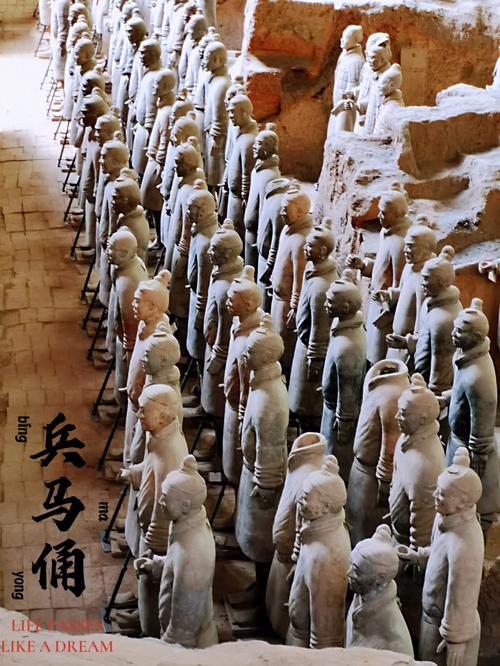
好的,这是关于兵马俑的文章:
What Makes the Terracotta Army So Special?
A Legion of Stone: An Overview of the Terracotta Army
The Terracotta Army is one of the most significant archaeological discoveries of the 20th century and a powerful testament to the might and ambition of China's first emperor, Qin Shi Huang. This vast collection of life-sized terracotta sculptures depicts the armies of Qin Shi Huang, the founder of the Qin dynasty who ruled in the 3rd century BC. The figures, each unique in their features and attire, were buried with the emperor in 210-209 BC to protect and serve him in the afterlife.
More Than Just Clay Soldiers: Why is the Terracotta Army Special?
The Terracotta Army's allure goes beyond its sheer scale; it lies in the intricate details and historical significance it holds:
1. Unprecedented Scale and Craftsmanship
The sheer size of the Terracotta Army is staggering. With an estimated 8,000 soldiers, 130 chariots with 520 horses, and 150 cavalry horses, it reflects the immense manpower and resources dedicated to its creation. The detailed craftsmanship is equally impressive. Each figure is meticulously molded with distinct facial features, hairstyles, armor, and even expressions, showcasing the high level of artistry of the Qin dynasty.
2. A Window into Ancient China
The Terracotta Army provides invaluable insights into the military organization, weaponry, and cultural practices of the Qin dynasty. The figures showcase different military ranks and divisions, revealing information about the army's structure and hierarchy. The weapons buried with the soldiers, including bronze swords, crossbows, and spears, are testaments to the advanced weaponry of the era. Moreover, the figures' clothing and hairstyles offer a glimpse into the fashion and social customs of the time.
3. Enduring Legacy and Historical Significance
The Terracotta Army stands as a symbol of Qin Shi Huang's ambition to unify China and establish a powerful centralized state. The construction of such a vast necropolis reflects the emperor's desire to maintain his power and control even in the afterlife. The discovery of the army has not only captivated the world but has also profoundly impacted our understanding of ancient Chinese history, art, and culture.
The Terracotta Army: FAQs
1. Where is the Terracotta Army located?
The Terracotta Army is located near the city of Xi'an in Shaanxi province, China.
2. How were the Terracotta Warriors made?
The warriors were created using local clay, molded into individual parts, and fired in kilns. The heads, arms, and torsos were created separately and then assembled.
3. Are all of the Terracotta Warriors the same?
No, each warrior is unique with different facial features, expressions, hairstyles, and even armor, reflecting their individual roles and ranks within the army.
note: This return of all, without the author's permission, may not be reproduced